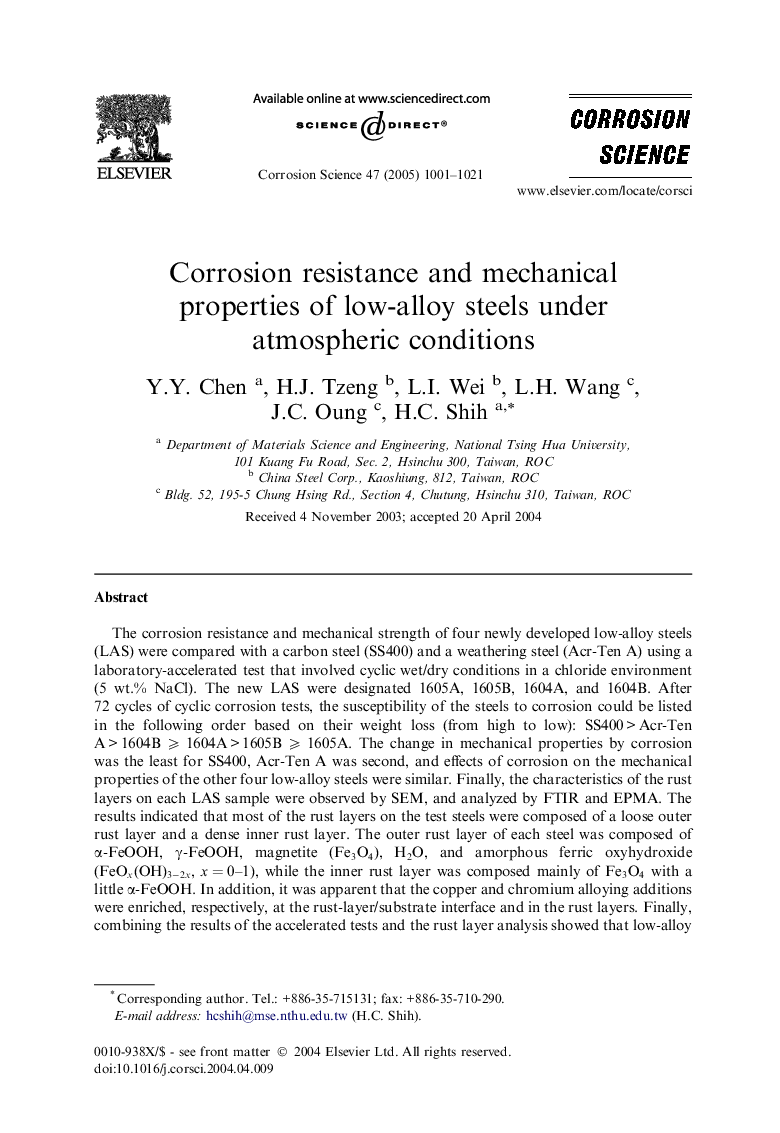| Article ID | Journal | Published Year | Pages | File Type |
|---|---|---|---|---|
| 10628519 | Corrosion Science | 2005 | 21 Pages |
Abstract
The corrosion resistance and mechanical strength of four newly developed low-alloy steels (LAS) were compared with a carbon steel (SS400) and a weathering steel (Acr-Ten A) using a laboratory-accelerated test that involved cyclic wet/dry conditions in a chloride environment (5 wt.% NaCl). The new LAS were designated 1605A, 1605B, 1604A, and 1604B. After 72 cycles of cyclic corrosion tests, the susceptibility of the steels to corrosion could be listed in the following order based on their weight loss (from high to low): SS400 > Acr-Ten A > 1604B ⩾ 1604A > 1605B ⩾ 1605A. The change in mechanical properties by corrosion was the least for SS400, Acr-Ten A was second, and effects of corrosion on the mechanical properties of the other four low-alloy steels were similar. Finally, the characteristics of the rust layers on each LAS sample were observed by SEM, and analyzed by FTIR and EPMA. The results indicated that most of the rust layers on the test steels were composed of a loose outer rust layer and a dense inner rust layer. The outer rust layer of each steel was composed of α-FeOOH, γ-FeOOH, magnetite (Fe3O4), H2O, and amorphous ferric oxyhydroxide (FeOx(OH)3â2x, x=0-1), while the inner rust layer was composed mainly of Fe3O4 with a little α-FeOOH. In addition, it was apparent that the copper and chromium alloying additions were enriched, respectively, at the rust-layer/substrate interface and in the rust layers. Finally, combining the results of the accelerated tests and the rust layer analysis showed that low-alloy steels, such as 1605A and 1605B, have better weathering steel properties than Acr-Ten A for use in the humid and salty weather.
Related Topics
Physical Sciences and Engineering
Materials Science
Ceramics and Composites
Authors
Y.Y. Chen, H.J. Tzeng, L.I. Wei, L.H. Wang, J.C. Oung, H.C. Shih,
